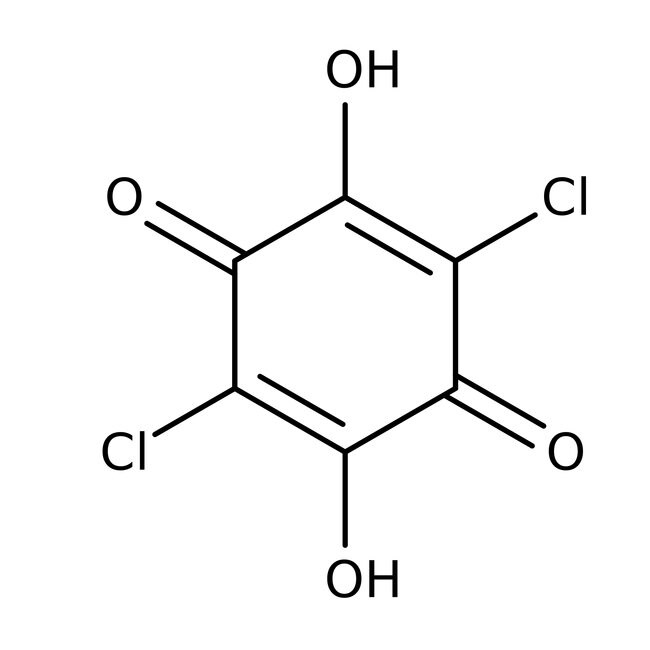Search Thermo Fisher Scientific
Ácido cloranílico, + 98 %, Thermo Scientific Chemicals



Ácido cloranílico, + 98 %, Thermo Scientific Chemicals
Identificadores químicos
Especificaciones
Descripción
This Thermo Scientific Chemicals brand product was originally part of the Alfa Aesar product portfolio. Some documentation and label information may refer to the legacy brand. The original Alfa Aesar product / item code or SKU reference has not changed as a part of the brand transition to Thermo Scientific Chemicals.
El ácido cloranílico se utiliza en la espectrofotometría. Reacciona con iones metálicos para formar complejos estables. También se utiliza como reactante en la preparación de complejos de dimetilbipiridil y (nonilbencimidazolilmetil)benceno. Además, se utiliza en reacciones de transferencia de carga con metoprolol tartrato. También se emplea en la síntesis de rectángulos metaletálgicos de osmio con actividad anticancerosa. Además, tiene actividades antibacterianas potenciales contra Staphylococcus aureus resistente a la meticilina.
Solubilidad
Soluble en agua caliente y metanol. Insoluble en disolventes orgánicos.
Notas
Incompatibles con agentes oxidantes fuertes.
Figuras
Documentos y descargas
Certificados
Preguntas frecuentes
Citas y referencias
Seguridad y manipulación
Classification of the substance or mixture
CLP classification - Regulation(EC) No 1272/2008
Label Elements
Signal Word
Warning
Hazard Statements
H315 - Causes skin irritation
H319 - Causes serious eye irritation
H335 - May cause respiratory irritation
Precautionary Statements
P261 - Avoid breathing dust/fume/gas/mist/vapors/spray
P280 - Wear protective gloves/protective clothing/eye protection/face protection
P302 + P352 - IF ON SKIN: Wash with plenty of soap and water
P305 + P351 + P338 - IF IN EYES: Rinse cautiously with water for several minutes. Remove contact lenses, if present and easy to do. Continue rinsing